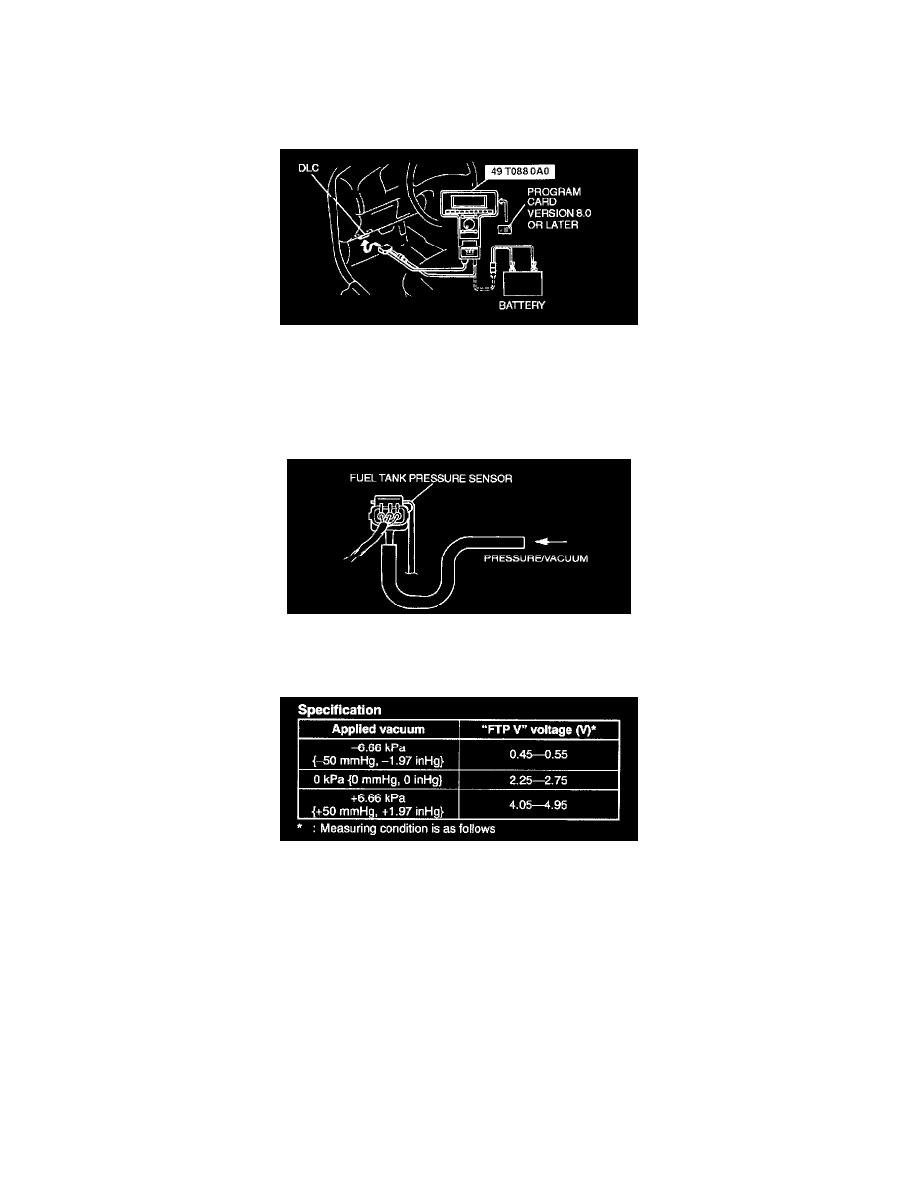Protege LX L4-1.6L DOHC (2000)

Fuel Tank Pressure Sensor: Testing and Inspection
Using the SST (NGS Tester)
NOTE:
-
Perform the following test only when directed.
-
The following vacuum values are indicated by relative pressure from barometric pressure.
1. Connect the SSTs (NGS tester) to the DLC-2.
2. Select the "PID/DATA MONITOR AND RECORD" function on the NGS tester display and press TRIGGER.
3. Select "FTP V" on the NGS tester display and press START. The NGS tester measure and shows the voltage.
4. Turn the ignition switch on.
CAUTION: Do not apply a vacuum outside the specified limits. Doing so will damage the fuel tank pressure sensor.
5. Apply pressure then a vacuum to the fuel tank pressure sensor according to the following procedure.
NOTE: The output voltage varies with the measuring condition.
Specification
6. Decrease the applied pressure from +6.66 kPa {+50 mmHg, +1.97 inHg} to -6.66 kPa {-50 mmHg, -1.97 inHg} and verify that the "FTP V"
voltage decreases accordingly as specified.
Input voltage: 5.0 V
Barometric pressure: 101.3 kPa {760 mmHg, 29.9 inHg} (Absolute pressure)
Barometric temperature: 30 - 100 °C {0 - 182 °F}
-
If not as specified, replace the fuel tank pressure sensor.
-
If fuel tank pressure sensor is okay, but PID value is out of specification, carry out the "Circuit Open/Short Inspection".
Circuit Open/Short Inspection
1. Remove the PCM.
